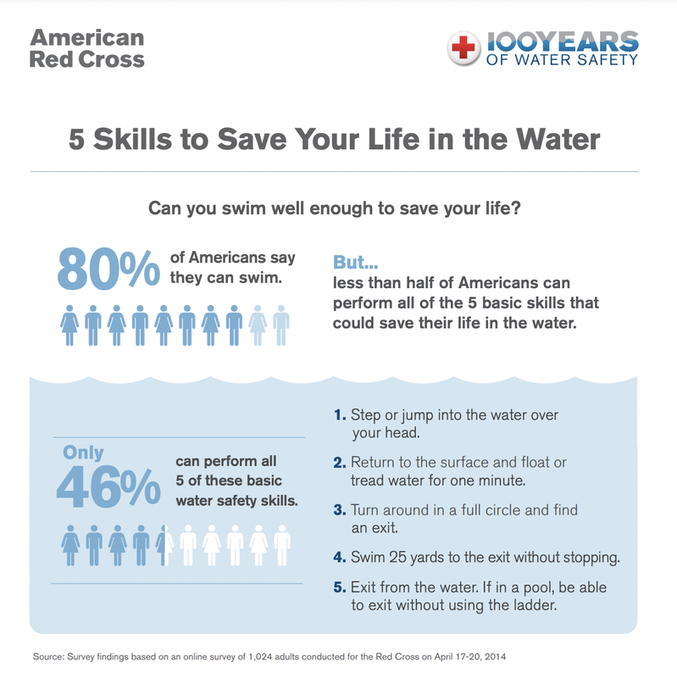|
FICTION! Water competent kids know more than just each of the swimming strokes. They also have a solid understanding of the water and know what to do if they are involved in a water emergency. How do I support my kids in becoming water competent?
Completing ALL Learn-To-Swim Levels is essential to having water-competent kids! Check out these top three reasons why it's essential your children complete all the learn-to-swim levels to become water competent! Reason 1: A child who completes Level 3 has acquired just the basic/minimal swimming skills for swimming and water competency in a pool. A swimmer that a completed Level 3 skills have only learned about half of the survival swimming needed to truly stay safe in, on, and around the water. Swimming skills they have learned are:
Reason 2: Completing Levels 4, 5, and 6 gives your child the skills and endurance to be more competent in different bodies of water and activities, such as going to a waterpark or swimming in open water. Swimming skills they learn in levels 4-6:
Reason 3: Water competency is not just about swimming skills, it's also about knowing how to recognize and act in a water emergency. Level 6 swim lessons teach swimmers what to do to help themselves and others in a water emergency. Check out our Water Competency Questionnaire to determine if your swimmers are Water Competent! Stay tuned for Part 2 of 3!
0 Comments
According to the American Red Cross, to be water competent, one must know more than just how to swim. A water competent swimmer has water smarts, swimming skills, and the ability to help others while engaging in water activities in, on, or around any body of water. WATER SMARTS Someone who is water smart is a swimmer that understands the water, how it moves, and its hazards. A water smart swimmer knows the following water safety rules:
SWIMMING SKILLS The five basic water competency swimming skills all swimmers should be able to do in any body of water, such as pools, lakes, rivers, streams, and oceans are:
HELPING OTHERS Someone who had the ability to help others understand the following guidelines of how to help someone in a water emergency. They know:
If you or your loved ones are unsure about any of these skills or safety topics, connect with one of our instructors today and we will be glad to assist in teaching you and your family how to stay safe in, on, and around the water.
As a parent, you are your child's first teacher. Remember that your children learn what to do and what not to do by copying your behavior. When you are near water make sure to model safe water habits by:
Looking for more water safety tips at home, check out our Free Water Safety Guide!
|
AuthorMeet Sabrina Keller, Categories
All
Archives
March 2022
|





